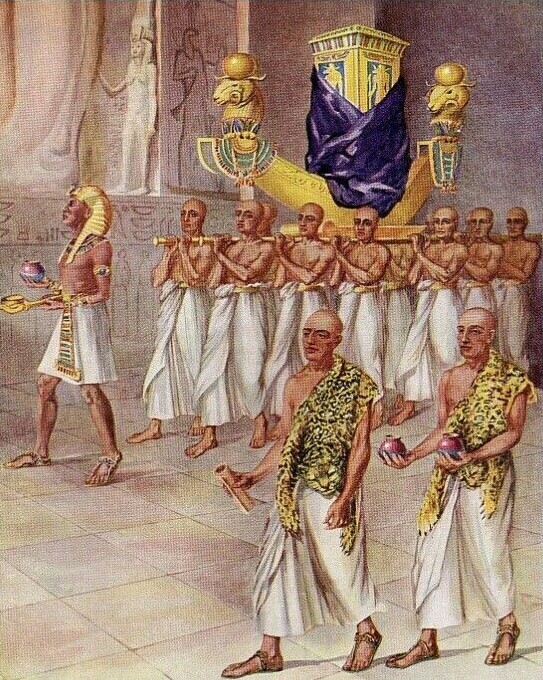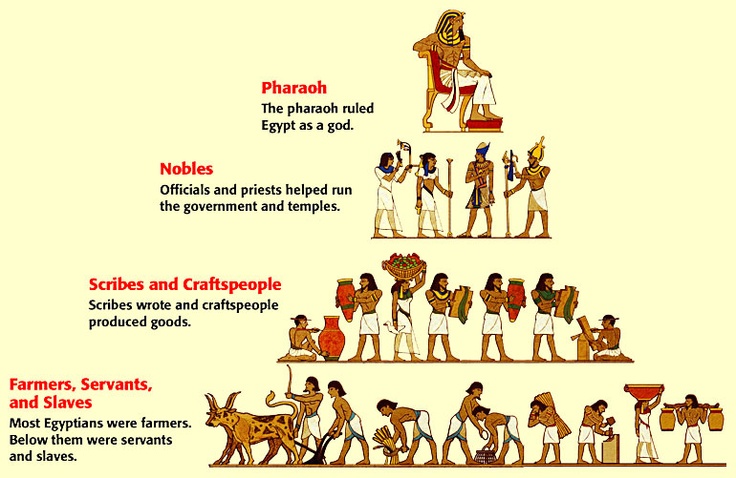The pharaoh sat atop Ancient Egypt’s intricate society, revered not only as a sovereign but also as a deity incarnate. This belief in the pharaoh’s divinity was not mere flattery; it was a fundamental principle that shaped every facet of Egyptian life and governance. My role today is to help you understand the pharaoh’s complex identity—a ruler who bore the weight of not just a crown, but also a sacred mantle bestowed by the gods.
The pharaoh was tasked with preserving Ma’at across the lands—an Ancient Egyptian concept embodying truth, order, and cosmic balance. These were not abstract principles; they guided decisions in court, spurred military conquests, and even informed architectural designs. The pharaoh’s divine duty was to uphold these values, with the belief that their failure could plunge the entire world into chaos.

Amidst the grandeur of palaces and temples, the pharaoh’s religious contributions were as critical as their kingly rule. In my exploration of their dual role, I’ve found it fascinating how rituals and decrees intertwined to create a religiously attuned state apparatus. Such was the importance of their title “High Priest of Every Temple”, which symbolized their connection to the divine and their leadership role in worship.
Furthermore, the “Lord of the Two Lands” was more than an impressive title; it was a political testament to the ruler’s unification of Upper and Lower Egypt. Being responsible for monumental constructions and leading an army into battle, the pharaoh was often seen as the stone that kept the balance between these two worlds, both symbolically and literally.
Now, let’s proceed? I will introduce you to the vizier—the right hand of the pharaoh and a high official whose work was imperative in translating the god-king’s will into everyday reality.
Unveiling the Vizier: The Pharaoh’s Chief Advisor
Peering into the heart of Ancient Egypt’s administration, the vizier emerges as a crucial figure. This seasoned official, akin to a modern prime minister, sat just below the pharaoh in terms of authority and influence.
Imagine the vizier starting his day with a visit to the pharaoh, receiving directives that would shape the lives of citizens. Upon leaving the royal chambers, his schedule would be dense with overseeing the nation’s bureaucratic machine: from the delicate matter of judicial rulings to the crucial oversight of the kingdom’s granary levels.

Each vizier wielded a power that was both subtle and substantial, often a reflection of the pharaoh’s confidence in their ability. While the vizier orchestrated the everyday workings of the state, it was also upon his shoulders that the weight of long-term planning rested. Swift and stern decisions permeated his tenure – this could mean the elevation of a noble or the coordination of monumental construction projects.
Historical records, like the walls of a tomb or the surface of a stela, narrate the deeds of numerous viziers whose sagacity proved instrumental in Egypt’s enduring civilization. One such record might recount the expansion of the empire’s borders; another, the detailed organization of a census.
The dual viziership, with one vizier appointed for Upper Egypt and another for Lower Egypt, underscored the breadth of the nation and the nuanced governance it required. Each vizier not only represented the pharaoh’s will but also became a critical node in the vast network that was the ancient Egyptian state.
Guardians of Wealth: The Chief Treasurer’s Pivotal Role
Imagine the complexities of managing an empire’s finances. In ancient Egypt, this daunting task fell to the Imy-r twy, or chief treasurer. Tasked with overseeing state finances, the chief treasurer was essential in maintaining Egypt’s robust economy. The role required a careful balance between collecting taxes, managing the treasury, and distributing economic resources strategically.
The treasury was the heartbeat of the ancient economy, holding the wealth accumulated from taxes, tributes, and trade. Its smooth operation was critical to funding monumental architecture, sustaining the military, and supporting the lavish lifestyle of the royal court. The chief treasurer played a significant role in ensuring these financial veins flowed without interruption.

One of the chief treasurer’s most important tasks was to guarantee efficient tax collection. This not only included ensuring taxes from the Egyptian populace were gathered but also securing tributes from conquered lands. They meticulously recorded trades and levies, providing an administrative backbone that supported Egypt’s dominance as a trade center.
Archaeologists have uncovered evidence of the chief treasurer’s precision in managing Egypt’s resources. Detailed records found on papyrus scrolls and temple walls have provided insights into their role in redistributing wealth, allowing Egypt to thrive as one of the ancient world’s superpowers.
Transitioning from monetary management to the spiritual realm, the chief treasurer’s rigorous resource allocation paved the way for the high priests to fulfill their divine duties. With the treasury coffers well-managed, the high priests were able to devote their focus to the gods and the people, strengthening the cultural and religious backbone of Ancient Egypt.
The High Priests: Religious Leaders and Royal Advisors
High priests in Ancient Egypt enjoyed a unique position, wielding both religious and political power. As stewards of the temples, which were centers of both worship and economic wealth, high priests commanded respect and authority. Their role was pivotal in maintaining the delicate balance between the divine and mortal realms, ensuring that the religious rituals and rites were performed with precision and devotion.
The advice of a high definitely carried weight, influencing the pharaoh’s decisions on state policies and religious concerns. This was especially crucial when it came to aligning the religious practices with Ma’at, the principle of order and balance that the pharaoh was duty-bound to uphold. High priests served as the intermediaries between the gods and the people, a role that put them in a crucial advisory position to guide the pharaoh through the complex religious landscape of the kingdom.

Importantly, the high priests managed vast temple estates, which were integral parts of the Egyptian economy. The revenue from these estates financed temple activities, but also supported the state’s infrastructure and projects. Their involvement in the day-to-day life of the state extended beyond the temple walls, often leading to a blending of liturgical duty and governmental strategy.
Archaeological finds, such as the inscriptions in temple complexes, attest to the significant influence these high priests held. These monuments not only illustrate the grandeur of the religious rituals but also serve as historical records of the symbiotic relationship between the temple and the throne.
Transitioning from the divine to the martial, the next integral part of the Pharaoh’s court was the Overseer of the Army. While the high priests provided counsel on matters of the gods and the spiritual well-being of the nation, it was the army’s overseer who assured the physical protection of the kingdom through military might and strategized expansion.
Might and Strategy: The Overseer of the Army’s Domain
I turn my attention now to a figure whose role was instrumental in shaping the ancient Egyptian realm’s boundaries and ensuring its citizens’ safety: the Overseer of the army. As commander of the military forces, this individual bore the weighty responsibility for the defense of the nation and the orchestration of warfare when necessary.
The Overseer held a multifaceted portfolio that encompassed managing the recruitment and training of soldiers, a task that required shrewd judgment to identify the capabilities and potential within ranks of Egyptian youth. Equally critical was the strategic allocation of these forces in both defensive stances and offensive campaigns, an aspect of military life that dictated the rise and fall of dynasties and the expansion of Egypt’s influence.

In line with ensuring a formidable military presence, the Overseer also worked in tandem with other officials to coordinate the logistics of sustaining a functional army. As anyone acquainted with military history knows, an army marches on its stomach, and overseeing the provision of food, equipment, and supplies was a logistical endeavor no less demanding than the tactical planning of sieges or battle strategies.
The legacy left by these military maestros is still being pieced together by historians and archaeologists today. From the remnants of fortifications to the battle scars etched into ancient artifacts, we can glean insight into the might of Egypt under their command.
Advancing beyond strategy and warfare, my narrative progresses to the royal scribe, who provides another vital organ in the body politic of Ancient Egypt. Like sinews connecting muscle to bone, the Royal Scribe created the records that linked the decisions at the top to the daily life of the kingdom.
The Heart of the Empire: Understanding the Royal Court’s Enduring Legacy
As I lay out this discourse, it’s clear that the Ancient Egyptian royal court was a hub of great minds and dutiful managers, ensuring the empire’s durability through time. It was the synergistic efforts of advisors and counselors in various roles, from the vizier to the scribe, that maintained the cogs of Egypt’s grand societal machine.
I unravel these key functions not merely as a historical exercise but as a fascinating lens through which we can view effective governance — a blend of divine right and very human wisdom. This ‘heart of the empire’ has indeed left a lasting impression. Their system of orderly administration, careful planning and recording of decrees, and meticulous oversight are principles that still resonate in modern governance.
The Royal Court was more than just a power structure. It was a complex organism that integrated warfare, economics, religion, and day-to-day administration, mirroring the multifaceted nature of any thriving society. The legacy of these ancient advisory roles underscores one incontrovertible truth: no ruler is an island, and the strength of a leader lies often in the counselors and aides that form their inner circle.
Archaeologists and historians continue to uncover the intricacies of the ancient Egyptian royal court. With every discovery, our understanding grows of how this civilization made decisions, enacted policies, and cemented itself as a defining historical powerhouse. We owe much of our perception of this civilization to the meticulous documentation by the scribes, who, after thousands of years, still speak to us from the past.
In closing, the historical account of Egypt’s advisors and counselors isn’t just a relic but a compelling blueprint. As much as it offers a snapshot of an ancient time, it equally provides a testament to the enduring importance of wise counsel, structured administration, and the delicate balance of power that guides nations.

